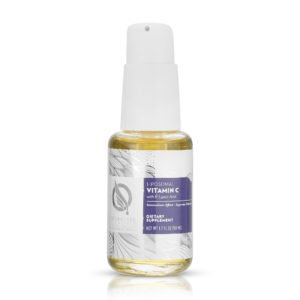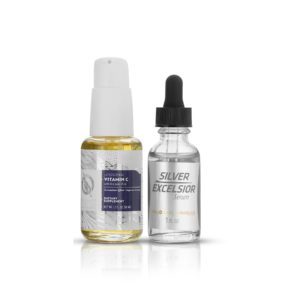Sharing is caring!
The resurgence of vaccine-preventable diseases such as measles and whooping cough is further fueling the perceived need for vaccinations. Nevertheless, the implication of the potential adverse effects of vaccines continues to linger.
What’s clear is that parents are concerned. The C.S. Mott Children’s Hospital at the University of Michigan recently published a study concluding that 40 percent of parents would be more likely to switch to a pediatrician who accepts unvaccinated children.
It is generally accepted that mild adverse effects following vaccination are not uncommon. However, it has been demonstrated that vaccines may also result in severe adverse events. For instance, in 2001, the vaccine court awarded Porter $2.7 million for a claim of the brain injuries he suffered from a DPT shot.
Concerns About Thimerosal
When Robert Kennedy started looking at the information on thimerosal, the mercury-based preservative used in many vaccines, he realized that the findings as reported by the media differed significantly from the findings of the scientific literature.
While health officials assure the public that no study suggests thimerosal in unsafe for children, numerous studies on PubMed suggested otherwise. More than 400 studies warn of the dangers of the toxic substance that is thimerosal.
World Mercury Project
Robert F. Kennedy Jr., an environmental attorney and member of the famous Kennedy family, launched the World Mercury Project in 2016. His goal is ending the exposure to neurotoxic mercury in vaccines, medical products, fish, and dental amalgams. Today, the company is known as the Children’s Health Defense. The change is in line with Kennedy’s broadened claim that every child who receives a vaccine is injured differently.
World Mercury Findings
Before the Food and Drug Administration (FDA) Modernization Act of 1997, no one investigated the effect of mercury exposure in infants from vaccinations. After the passing of the Act by Congress, the FDA now had a requirement for maintaining a list of the pharmaceutical products that contain mercury.
The findings? More than 30 of the FDA licensed inactivated vaccines contained thimerosal. Thimerosal is a preservative that is used in vaccines that are typically administered to children between the date of birth and 18 months of life such as DTaP and hepatitis vaccines.
In his research, Kennedy determined that vaccines were not subjected to the safety rigors that are required for other pharmaceuticals to be approved by the FDA. Additionally, he uncovered a 1930 Eli Lilly-sponsored experiment on thimerosal tested in patients with meningitis. The experiment failed to prove that thimerosal was non-toxic.
Another study, published in 1931, suggested the low toxicity profile of thimerosal in humans; however, it neglected to disclose that the human subjects were ill and subsequently died. Congress charged the FDA with determining the quality and quantity of mercury in the vaccines and the analysis of the effects. It was determined that thimerosal contains close to 50 percent of ethyl mercury by weight.
In 1999, the FDA released a statement after a review, addressing the possibility that infants who received numerous thimerosal preserved vaccines might have been exposed to a cumulative excess of mercury when compared to the federal safety guidelines.
No Safe Use Of Ethyl Mercury
From the address, the FDA confirmed there were no initial guidelines on the safe use of ethyl mercury. However, the levels of thimerosal were determined by the methylmercury guidelines of toxicity. Ethylmercury and methylmercury are two organic forms of mercury. Their organic nature allows them to pass through the cell membranes and the blood-brain barriers easily.
They are the most toxic forms of mercury. Ethylmercury (etHg) is a metabolite of thimerosal, the preservative used in some vaccines. Fish typically have methylmercury (meHg). Consumption of contaminated fish during pregnancy increases the risk of exposing the fetus to organic mercury. Exposure to ethylmercury is relatively brief, considering its biological half-life is 10-20 days (and as short as 7 days). In comparison, methylmercury has an average half-life of 70 days (30 to > 150 days).
The mechanisms of metabolism, bioaccumulation, and elimination of both ethyl- and methylmercury depend on naturally occurring biological variations determined by genetic makeup, the gut microbiome, and dietary co-exposure. A major source of ethylmercury in the body is thimerosal-containing vaccines. The toxicokinetics of etHg and meHg remain not fully understood and physicians can play a valuable role in minimizing exposure to organic mercury from various pharmaceutical sources.
FDA And Plausability
The FDA also pointed out that for children to be affected by thimerosal, it had to be in amounts of 100 or 1000 times more than what is found in vaccines. However, the plausibility of adverse effects following vaccination due to biological reasons can not be eliminated.
In the end, the FDA decided that there was no conclusive evidence present to either reject or support the claims that the thimerosal in vaccines was toxic to infants.
The data that was collected also showed an association of mercury with the runaway epidemic of neurological disorders. These disorders include ADD, speech delay, tics, ADHD, sleep disorders, and autism.
In 2004, an FDA official gave testimony before the Congressional committee. In the testimony, it was clear that no double-blind study has been conducted to determine that thimerosal was safe for children.
Vaccinated And Unvaccinated Children Outcomes
After the release of the studies that indicated a correlation with thimerosal and adverse effects in children, the Institute of Medicine (IOM) requested that the Center for Disease Control and Prevention (CDC) conduct research to compare the different outcomes between vaccinated and unvaccinated children.
Other independent researchers conducted numerous studies to determine the differences in outcomes between children who are vaccinated and those who are not.
The studies concluded that vaccinated children have higher rates of chronic diseases and infections, including autoimmune disorders and brain injury. Kennedy has since asserted that:
- The unpublished study done by the CDC showed an increase in the risk of Autism, sleep disorders, neurodevelopmental disorders, and speech disorders as a result of vaccination.
- The odds of allergies increased due to DTP and Tetanus vaccinations.
- Mortality in girls was increased by DTP shots.
- The odds of a child requiring special education increased as a result of hepatitis B vaccines. It also increased the odds of children getting autism.
- Thimerosal from Hepatitis B vaccines increased the odds of ADHD in vaccinated children when compared to unvaccinated children
- A significant level of thimerosal increased the risk of autism
- In 1988 in New Zealand, an addition in the Hepatitis B vaccine increased Type 1 Diabetes in children.
Hesitations
The release of these studies has further fueled the rise of different people and groups that continue to share misinformed or manipulated information. A group like the Stop Mandatory Vaccination manages to create anti-vaccine videos that reach an average of 100,000 views every day, most of whom are parents.
On Facebook, research on the trending vaccines brought many anti-vaccine groups such as Vaccines Exposed, Unite Against Vaccines, and Vaccines Injury Story. This has led to hesitation among many parents when it comes to administering vaccines to their children.
On the other hand, many parents have concerns that unvaccinated children might be spreading infectious diseases at school and on playgrounds. For instance, in 2015, an unvaccinated 11-year-old was hospitalized with measles after a Disneyland theme park visit.
A few weeks later, 125 cases of measles emerged in eight different states. All the cases were connected to the park. Out of the 110 cases in California, 47 have unknown vaccination status while the remaining 14 were vaccinated.
Counter Studies
According to Forbes, the team that initially determined thimerosal to have adverse health implications in infants later challenged their own findings. It was determined that further studies were needed to provide conclusive evidence on the effects of thimerosal on infants.
The CDC went ahead and distributed their findings. They mostly provided the data to the people that were not aware of the inconsistencies within the vaccine research results. The step by step CDC vaccine results are currently used to ambiguate the effects of mercury in vaccines.
Since then, numerous studies have been conducted that contradict the claims made by Kennedy and his group. For instance, a 2005 study failed to show a link between vaccines that contain thimerosal and ASD. Also, studies in the UK, Finland, and Japan fail to support the claims made by Kennedy. “Consistent with studies in other populations, we observed no association between MMR vaccination and increased ASD risk among privately insured children” states the researchers from a 2015 study done in the U.S. The researchers add that, “We also found no evidence that receipt of either 1 or 2 doses of MMR vaccination was associated with an increased risk of ASD among children who had older siblings with ASD.”
The Removal Of Thimerosal
As of 2001, thimerosal was removed from all childhood vaccines except for the multi-vial flu vaccines. A total of 48 million flu vaccines contain the preservative thimerosal. Also, there are alternative preservative-free flu vaccines that parents may consider for their children. However, like any other medication, these too have side effects.
Many people believe that Kennedy and his team are doing the right thing for the future health of the population.
“Children’s Health Defense (formerly World Mercury Project) is a non-profit doing excellent work,” says Jennifer Margulis, Ph.D., an investigative journalist and author. Margulis has been researching and writing about children’s health and vaccine safety for over 15 years. “There is ample peer-reviewed evidence that their concerns — that our children are being over-exposed to toxins — are scientifically valid,” says Margulis. Margulis is also the co-author of the best-selling book, The Vaccine-Friendly Plan, with Paul Thomas, M.D.
“America’s children are sicker and more brain-damaged than ever before,” Margulies further argues.
We have to acknowledge that status quo medicine is failing our kids. Children’s Health Defense is working hard to fix what’s broken, empower parents, and promote safe vaccination and vaccine safety. Their work will enhance public health.
There are many other methods that people consider to be best in raising healthy children. And the most significant thing for parents to do is limit any possible harm to their children. Whether or not you decide to vaccinate your children, it is vital that you become informed and critically evaluate all the evidence in concert with trusted healthcare providers.
 Elton was first a general writer. But after battling a weight management problem, he became passionate about living a healthy lifestyle. Now he works out 5 times a week, lives off keto, and writes about health.
Elton was first a general writer. But after battling a weight management problem, he became passionate about living a healthy lifestyle. Now he works out 5 times a week, lives off keto, and writes about health.
Submit your story or essay to Buzzworthy Blogs.
-
Sale Product on sale
 Quicksilver Liposomal Vitamin C w/ Liposomal$30.50 – $85.50 — or subscribe and save 5%Rated 5.00 out of 5 based on 7 customer ratings
Quicksilver Liposomal Vitamin C w/ Liposomal$30.50 – $85.50 — or subscribe and save 5%Rated 5.00 out of 5 based on 7 customer ratings -
Sale Product on sale
 Liposomal Vitamin C + Silver Excelsior Immunity Bundle
Liposomal Vitamin C + Silver Excelsior Immunity Bundle$124.69Original price was: $124.69.$118.88Current price is: $118.88. — or subscribe and save 5%Rated 5.00 out of 5 based on 1 customer rating -
 Colloidal Silver Healer$362.50Rated 4.90 out of 5 based on 21 customer ratings
Colloidal Silver Healer$362.50Rated 4.90 out of 5 based on 21 customer ratings
- Tags: children's health, mercury, thimerosal, vaccine




